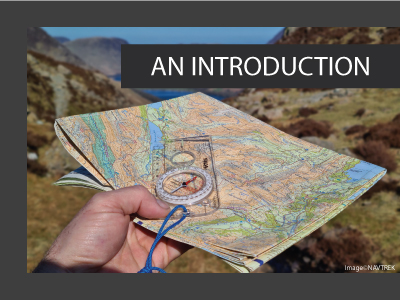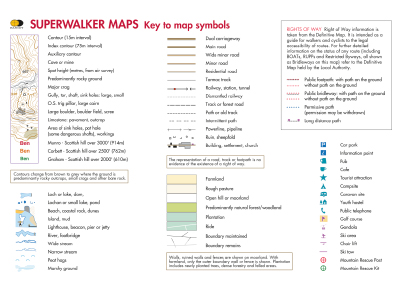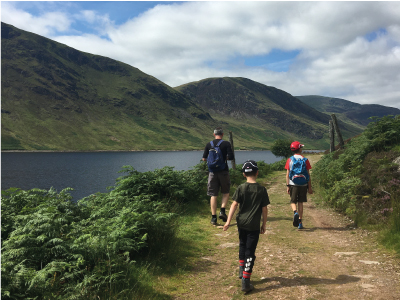May 2021 - Beginner's Guide to Navigation - Introduction
by Nigel Williams

The phrase "map reading" brings back memories of school days, sat in the classroom, learning about grid references, different norths, angles and compass bearings with no relation to the ground. What we actually need to be able to do is to "navigate" outside following a route by combining map and ground information. It is a lot more fun and healthy, and requires decision making with consequences attached.
Grid references are for communicating a position on a map and have nothing to do with navigation or finding our way. On a mapped path we can generally describe a rough position. The use of a compass beyond orientating the map is generally only relevant for going cross country in remote terrain and poor weather when the implications of being lost can be serious.

We do need to learn to use a paper map which importantly helps train the brain in the skills of navigation. Consider Stone Age navigation before maps. The brain learnt to create mental maps based around observations of landmarks and their relation to each other and we still need to develop that mental process today. The map enables us to speed up the mental process and visit places we have never been to and yet still know roughly where we are.
Using GPS mapping on a phone may seem an easy option, however it can have some serious drawbacks as many a rescue team will testify to, and neuroscience has demonstrated that it uses completely different areas of the brain and fails to develop the cognitive functions of navigation.

It takes time to develop navigation confidence. The route and terrain chosen impacts the navigation skills required. Exploring further afield, keep to well mapped routes and keep it simple, (see the February 2021 route planning blogs). It can be helpful to go solo or with someone also interested in understanding the map to reduce distractions from practicing navigation.
Whilst the basic skills are easy enough to pick up, confidence can be a key element in navigation so it may be worth investing in a beginner's navigation course such as the National Navigation Award Scheme (NNAS) bronze level.
Return to the Navigation Blog
 FREE UK delivery
FREE UK delivery For Christmas delivery information
For Christmas delivery information 







